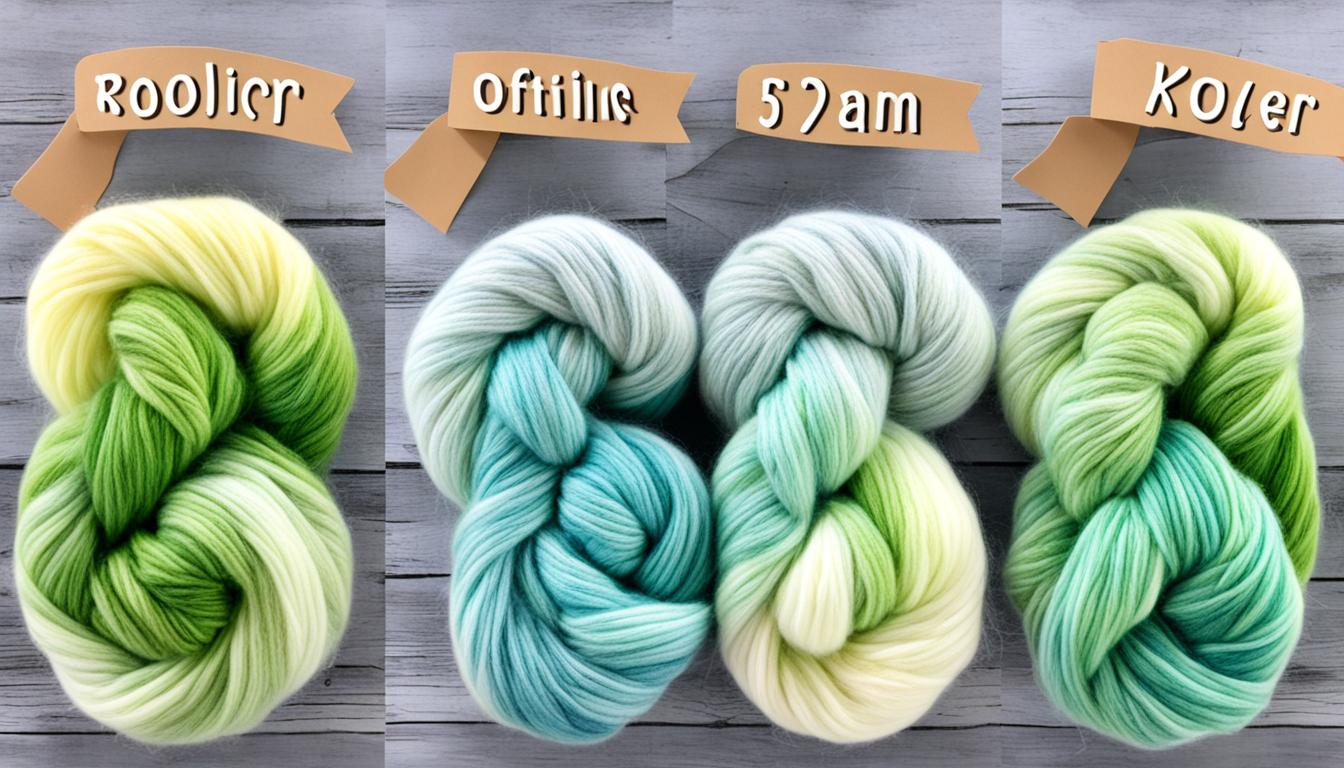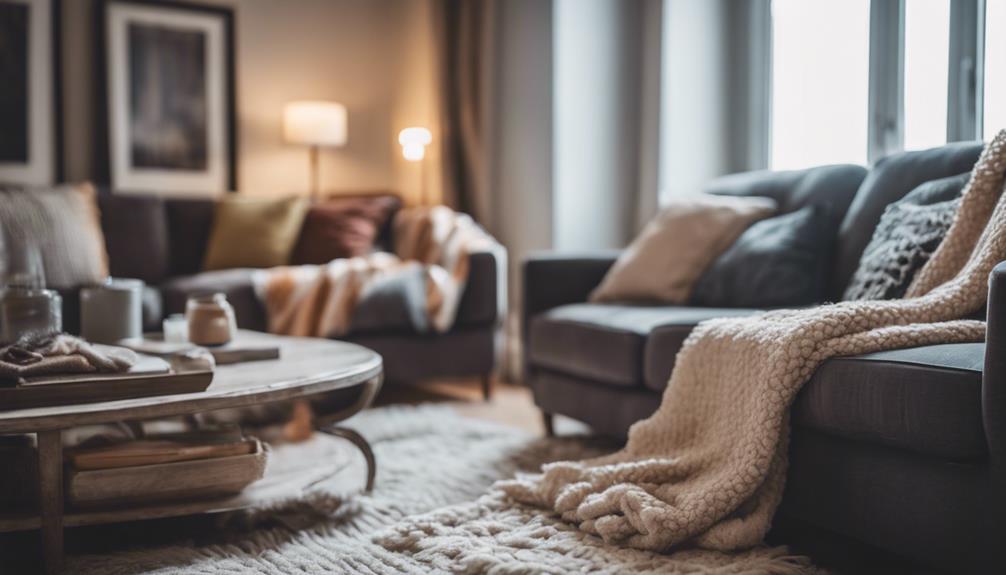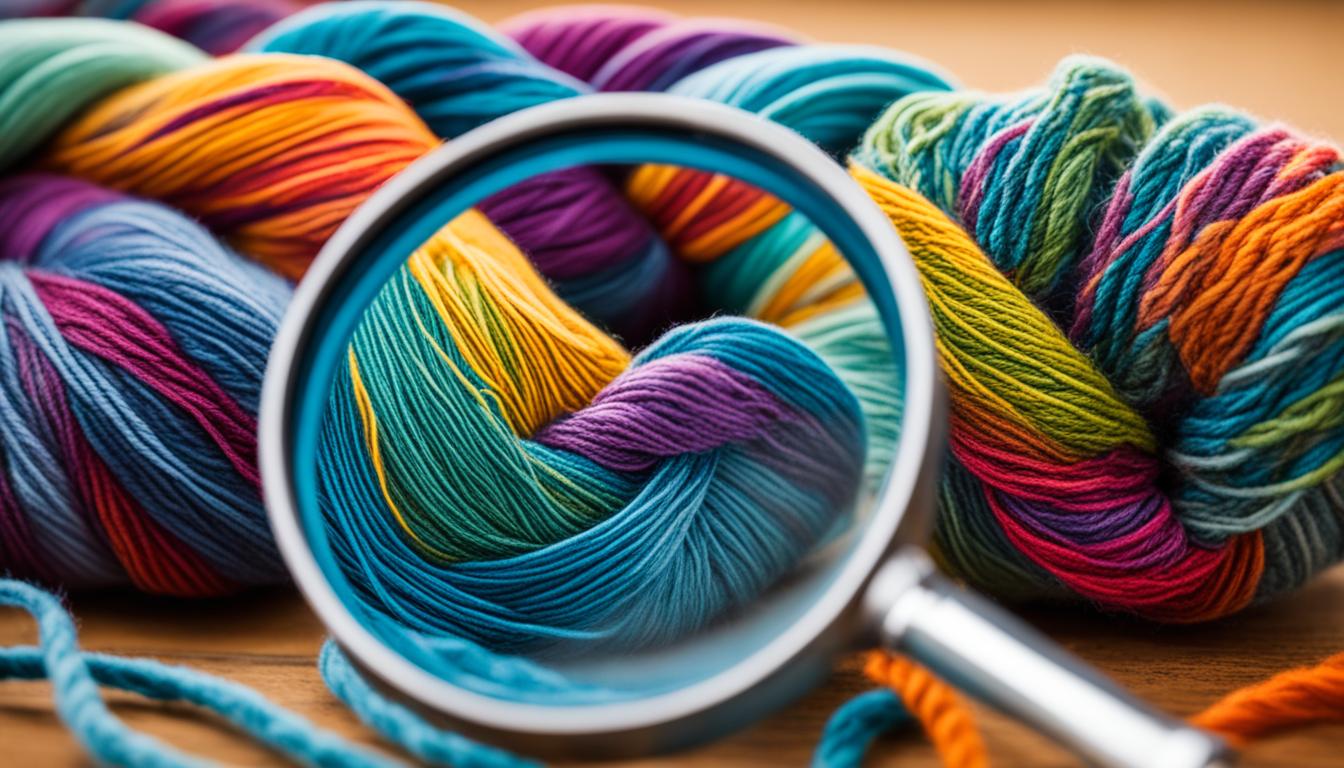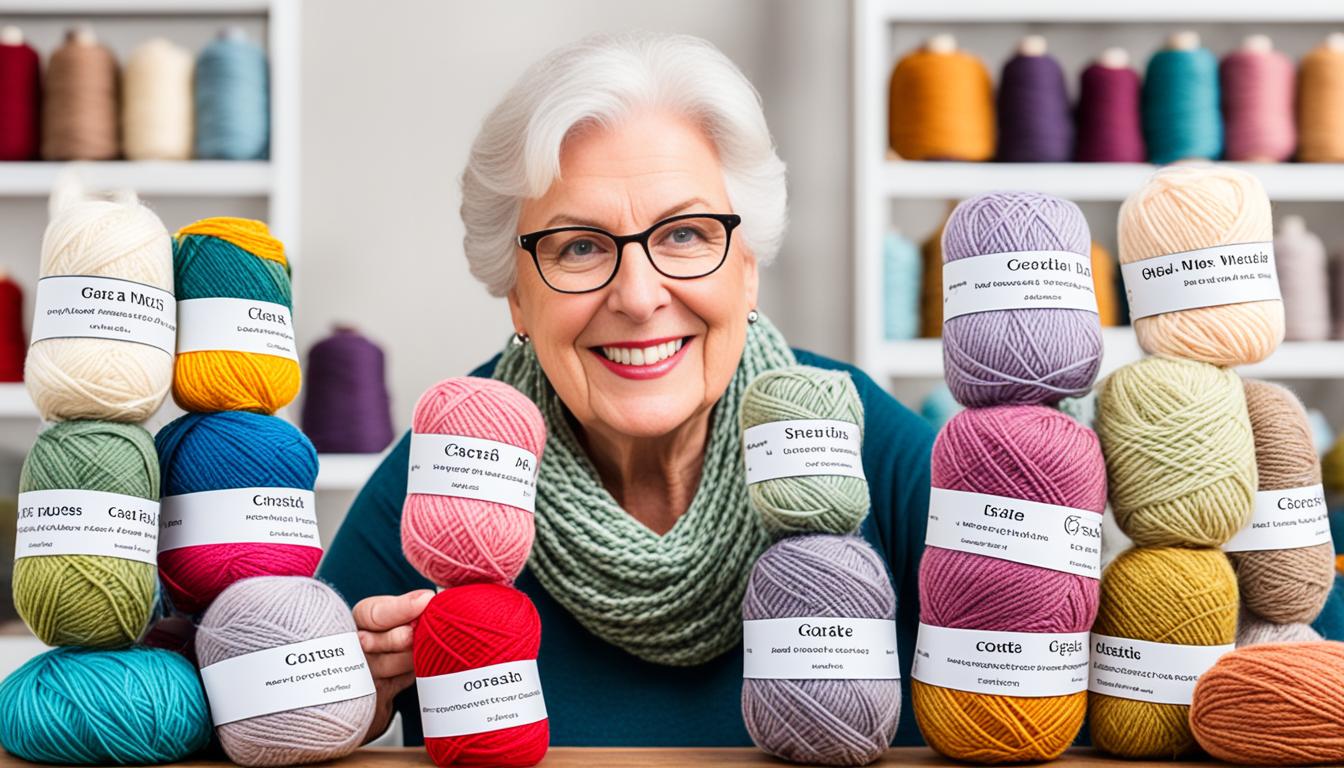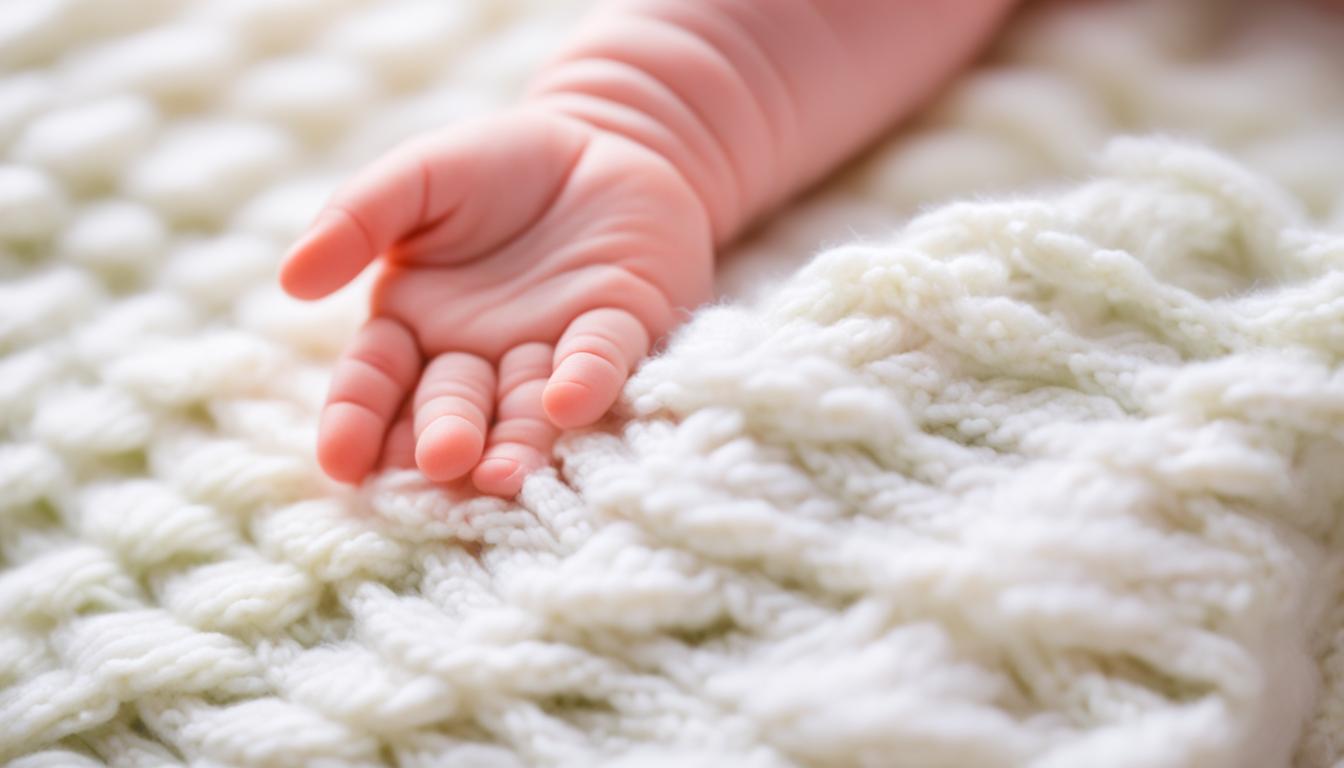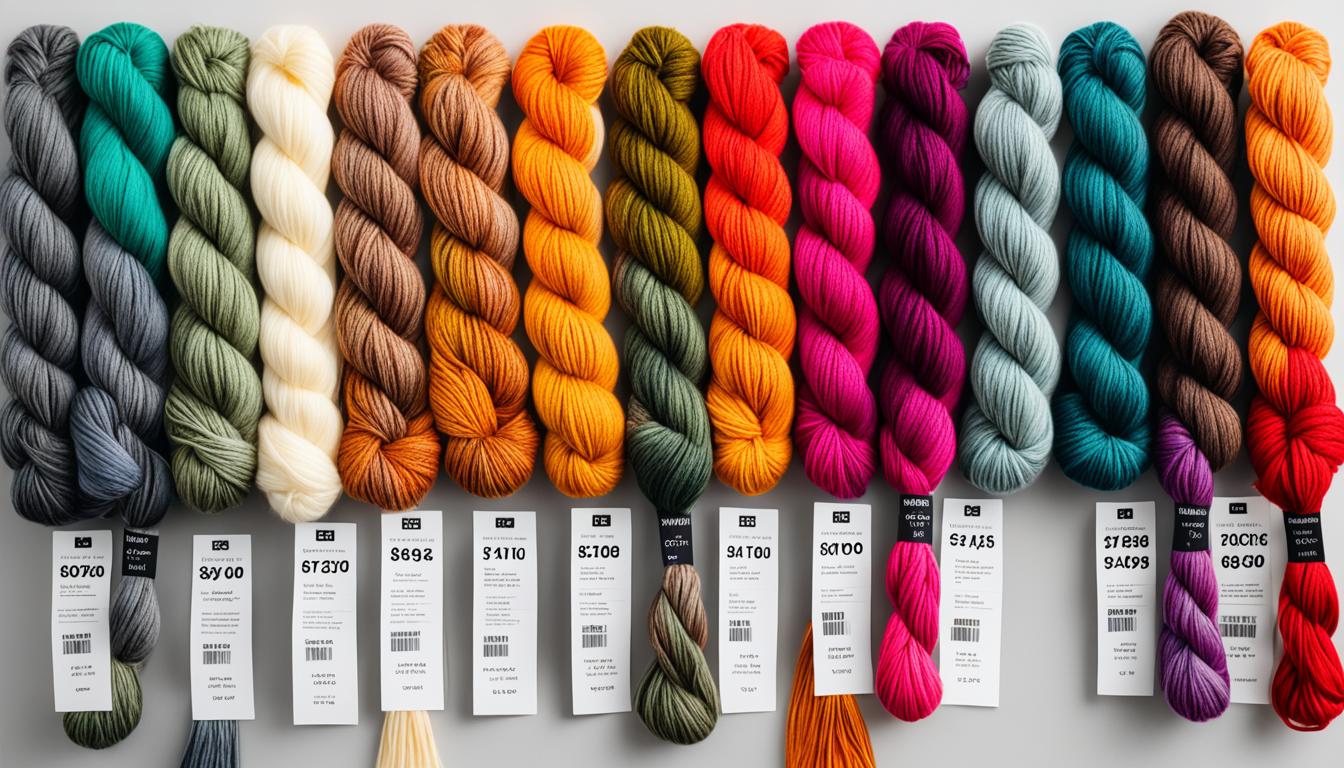Have you ever pondered how much yarn you can obtain from a 4 oz roving? Are you having trouble converting between roving and yarn amounts? Fear not! In this article, we will demystify the process and offer valuable information on estimating the quantity of yarn you can create from a 4 oz roving. Prepare to explore the intriguing realm of roving to yarn conversion!
Key Takeaways:
- Estimating yarn quantity from roving depends on factors like fiber type, preparation, and spinning technique.
- Worsted weight yarn (12 WPI) yields 56 to 75 yards per ounce, while bulky yarn (10 WPI) yields 38 to 50 yards per ounce.
- Sampling, swatching, and calculating yards per pound are crucial for accurate yarn estimates.
- Consulting with experienced spinners can provide personalized recommendations and guidance in choosing the right roving.
- Enjoy the journey of spinning and experimenting with different roving options to create beautiful handspun yarn.
How to Estimate Yarn Amounts for Handspun Projects
Estimating how much handspun yarn you need for a project can be challenging. There are various variables to consider, such as yarn density, consistency, and fiber content, which all affect the amount of yarn you can spin from a specific weight of roving. To ensure accurate estimates, it is recommended to sampling and swatching to determine the best yarn specifications and gauge for your project.
Sampling involves spinning a small amount of roving to test the desired yarn weight and consistency. By plying the sample yarn and measuring its Wraps Per Inch (WPI), you can determine the approximate yardage per ounce. This information helps in calculating the overall amount of roving needed for your project.
Swatching is another crucial step in the estimation process. By knitting or crocheting a small sample swatch with your handspun yarn, you can determine the gauge, fabric density, and overall look of the finished project. This allows you to make any necessary adjustments and further refine your estimated yarn quantity.
Once you have determined your desired yarn weight and yardage, you can use yardage requirement charts or generic guidelines to calculate the amount of roving needed. These resources provide estimates based on the typical yarn weight categories and their corresponding yardage per pound. By referencing these charts, you can make more accurate calculations and ensure you have enough roving to complete your handspun project.
Remember, estimating yarn amounts for handspun projects requires some trial and error, as each spinning session and project may yield slightly different results. Embrace the process, experiment with different fiber types and spinning techniques, and enjoy the journey of creating beautiful handspun yarn.
Yardage Requirement Chart (for reference):
| Yarn Weight Category | Wraps Per Inch (WPI) | Yards Per Pound |
|---|---|---|
| Fingering | 14-16 | 1600-2000 |
| Sport | 12-14 | 1200-1600 |
| Worsted | 10-12 | 1000-1200 |
| Bulky | 8-10 | 800-1000 |
Use this table as a general reference to estimate yardage based on typical yarn weight categories and their corresponding WPI. Keep in mind that individual spinning techniques and variations in fiber preparation may yield different results. Sampling and swatching are essential for accurate yarn estimation.
Factors Affecting Yarn Quantity from Roving
When estimating the amount of yarn you can produce from roving, several factors come into play. These factors include yarn density, spinning consistency, and the type of fiber used. Understanding how these factors affect yarn quantity will help you in your roving yarn yield calculation and enhance your roving yarn production guide.
Yarn Density
The density of the yarn you spin from roving can have a significant impact on the amount of fiber needed to achieve a specific yardage. Yarns that are more compacted and dense require less fiber for the same weight. For example, if you spin a yarn with a high twist and tightly plied, it will take up less space and require less roving compared to a loosely spun yarn.
Spinning Consistency
Your spinning consistency, particularly in terms of plying method, can influence both the appearance of the finished yarn and the yardage you can achieve. Consistently using a specific plying method, such as a 2-ply or Navajo ply, will result in variations in yarn thickness and overall look. These variations directly impact the yardage you obtain from a given amount of roving.
Type of Fiber
The type of fiber you choose can also impact the yardage you can achieve from roving. Different sheep breeds have varying wool characteristics, with finer fibers typically producing more yardage compared to coarser fibers. For example, roving made from the wool of a Merino sheep with its fine fibers will typically yield more yardage than roving made from the wool of a Coarsewool sheep.
The Bradford Count
The Bradford Count is a measurement system that quantifies the fineness of wool based on the number of skeins that can be spun from a pound of combed top. It is a valuable tool for assessing the fiber’s quality and estimating the yardage that can be obtained. A higher Bradford Count indicates finer wool with the potential for greater yardage.
By considering these factors and taking them into account in your spinning process, you can better estimate the yarn quantity you can produce from roving. Understanding the relationship between yarn density, spinning consistency, fiber type, and the Bradford Count will enhance your roving yarn production guide and contribute to successful spinning endeavors.
| Factor | Impact on Yarn Quantity |
|---|---|
| Yarn Density | More compacted and dense yarns require less fiber for the same weight. |
| Spinning Consistency | Using a specific plying method can affect the yardage achieved. |
| Type of Fiber | Different sheep breeds and their wool characteristics influence yardage. |
| The Bradford Count | A higher Bradford Count indicates finer wool and potential for greater yardage. |
Understanding how these factors interact will help you make more accurate estimates and guide your yarn production decisions when working with roving.
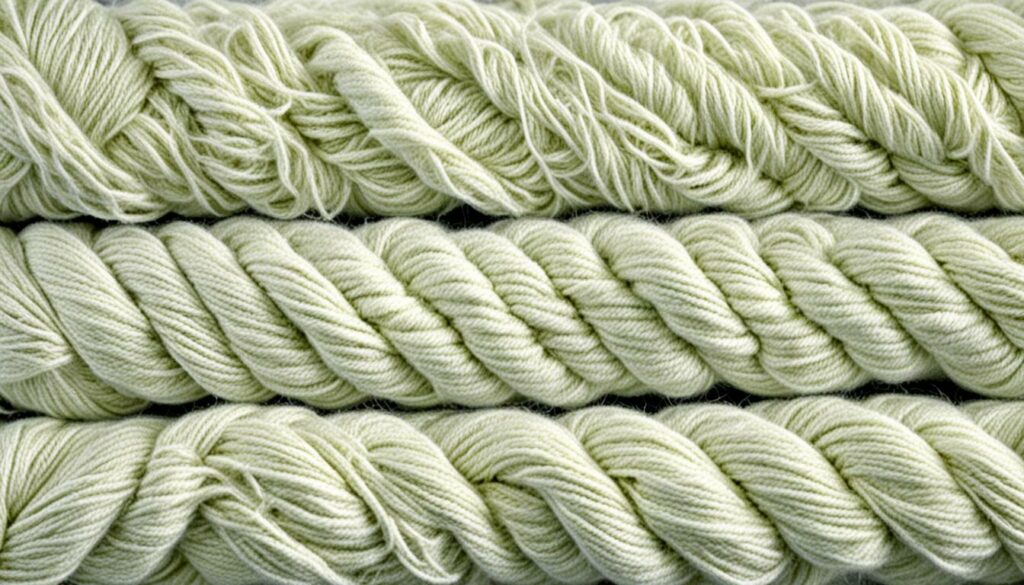
Sampling and Swatching for Accurate Estimates
Sampling and swatching are essential steps in ensuring you have the desired yarn for your project and accurate estimates of yarn quantity. By taking the time to sample and swatch, you can determine the yarn specifications that will best suit your project.
When determining your yarn specifications, consider factors such as the type of yarn (worsted or woolen), drafting method, and plying technique you want to achieve. These decisions will impact the overall look and feel of your finished yarn.
To begin the sampling process, take a small amount of your fiber and spin it to your desired specifications. This sample will serve as a reference for the target yarn you want to create. Once you have spun the sample, ply it to see how the fibers come together and create your desired yarn structure.
After plying your sample yarn, it is crucial to wash and measure it to determine the wraps per inch (WPI). This measurement will give you an idea of the yarn weight and thickness you have achieved. A higher WPI indicates a finer yarn, while a lower WPI indicates a thicker yarn.
Next, knit a swatch using your sample yarn to determine the gauge and overall look of your finished fabric. By knitting a swatch, you can assess how the yarn behaves on different needle sizes and fabric constructions. This step is especially important if you are following a specific pattern with gauge requirements.
Pro Tip: Ensure your sample and swatch are knitted with the same needle size and stitches per inch (SPI) you plan to use for your project. This will provide the most accurate representation of your finished fabric.
Calculating your “yards per pound” is the final step in determining how much roving you will need for your desired yardage. To calculate this value, divide the length of your sample yarn (in yards) by the weight of your sample (in pounds). This calculation will give you an estimate of how many yards of yarn you can expect to produce from a pound of roving.
Refer to the table below for a visual representation of the sampling and swatching process:
| Step | Description |
|---|---|
| 1 | Spin a sample yarn to your desired specifications. |
| 2 | Ply the sample yarn to create your target yarn. |
| 3 | Wash and measure the sample yarn to determine wraps per inch (WPI). |
| 4 | Knit a swatch with the sample yarn to determine gauge and overall look. |
| 5 | Calculate “yards per pound” based on the sample yarn. |
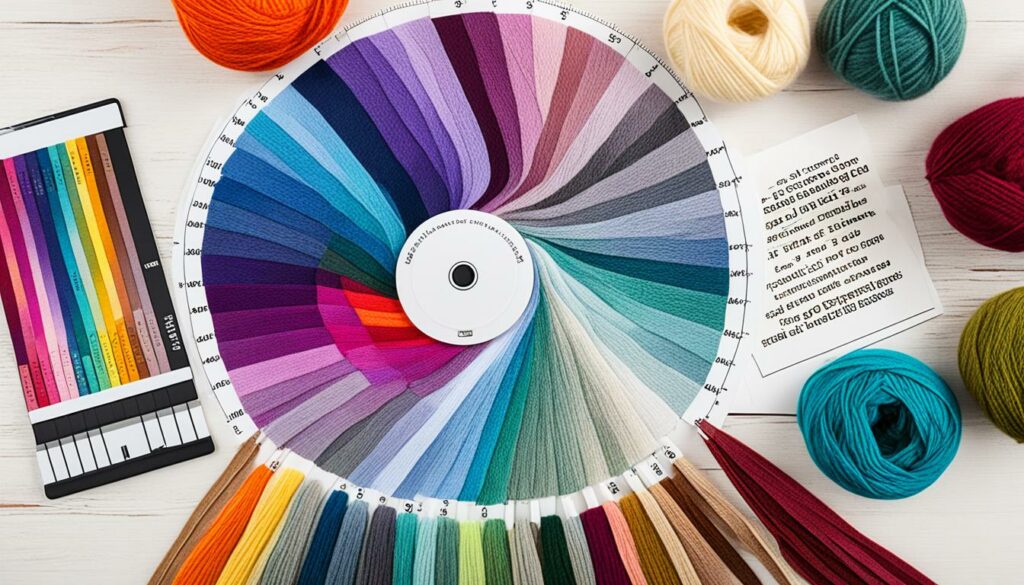
Calculating Yarn Quantity Based on Yards per Pound
Once you have determined the “yards per pound” of your handspun yarn, you can calculate the amount of fiber needed for your project. To do this, reference your pattern or use a generic yardage requirement chart to determine the required yardage.
Calculating Fiber Quantity:
To calculate the fiber quantity needed, divide the required yardage by the “yards per pound” of your handspun yarn. This will give you an estimate of the amount of roving needed for your project.
Required Fiber Quantity (in pounds) = Required Yardage (in yards) ÷ Yards per Pound
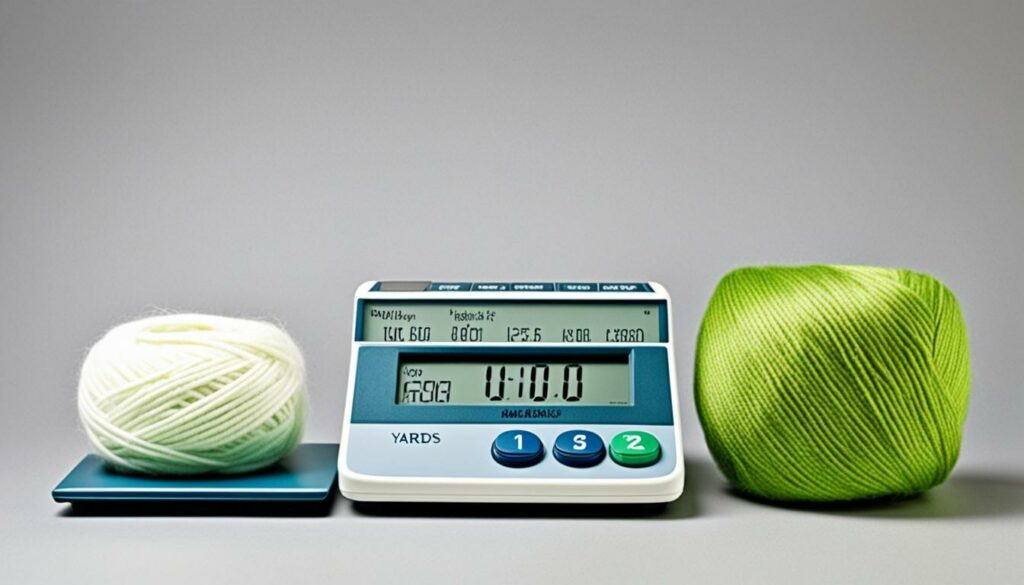
It is essential to add 15 to 20% extra fiber for safety. This ensures that you have enough roving to complete your project without the risk of running out.
Remember, calculating the fiber quantity based on yards per pound allows you to accurately estimate how much roving you will need for your handspun yarn.
Yarn Weight Categories and Corresponding Yards per Pound
When it comes to yarn weight, different categories are defined by the Craft Yarn Council. These categories are associated with specific yards per pound and wraps per inch measurements, helping us determine the characteristics and suitable uses of each yarn weight.
Let’s take a closer look at some of the common yarn weight categories and their corresponding yards per pound:
| Yarn Weight Category | Yards per Pound |
|---|---|
| Cobweb Weight | Over 6000 yards |
| Lace Weight | 3000 – 6000 yards |
| Fingering Weight | 1500 – 3000 yards |
| Sport Weight | 900 – 1500 yards |
| Worsted Weight | 400 – 900 yards |
| Bulky Weight | 200 – 400 yards |
| Super Bulky Weight | Less than 200 yards |
In addition to yards per pound, the wraps per inch (WPI) and stitches per inch (sts per inch) measurements can also guide us in determining the appropriate yarn weight for a specific project. The WPI tells us how many times the yarn wraps around a one-inch gauge, while the sts per inch indicates the number of stitches per inch in a knitted fabric.
Understanding these yarn weight categories and measurements can help us choose the right yarn for our projects and achieve the desired outcomes.
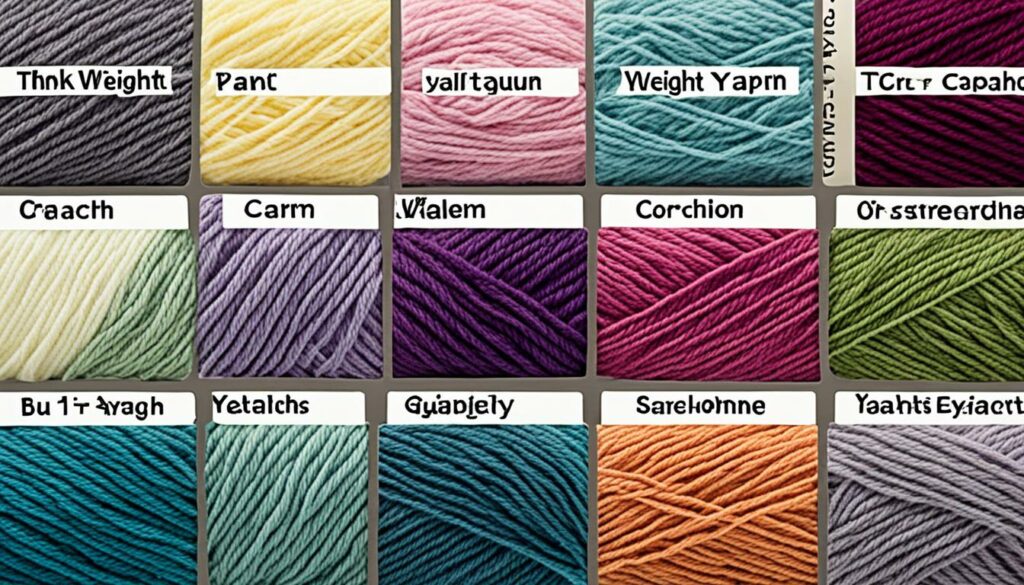
Considerations for Choosing Roving Quantity
When it comes to choosing the right quantity of roving for your spinning project, several factors should be taken into account. The size of your project and the desired outcome are essential considerations. By determining the project size and understanding your goals, you can ensure an effective use of roving and avoid running out of fiber mid-project.
4 oz of roving is often sufficient for smaller projects such as hats, gloves, or smaller shawls, especially when spun into a sport weight yarn. It provides enough fiber to spin a decent amount of yarn without the need for excessive joins or breaks. If you’re planning to create something more substantial, like a long scarf or a set of hat and mittens, you may want to consider purchasing 8 oz or more of roving. This larger quantity of fiber will allow you to spin the necessary yardage for your desired project size.
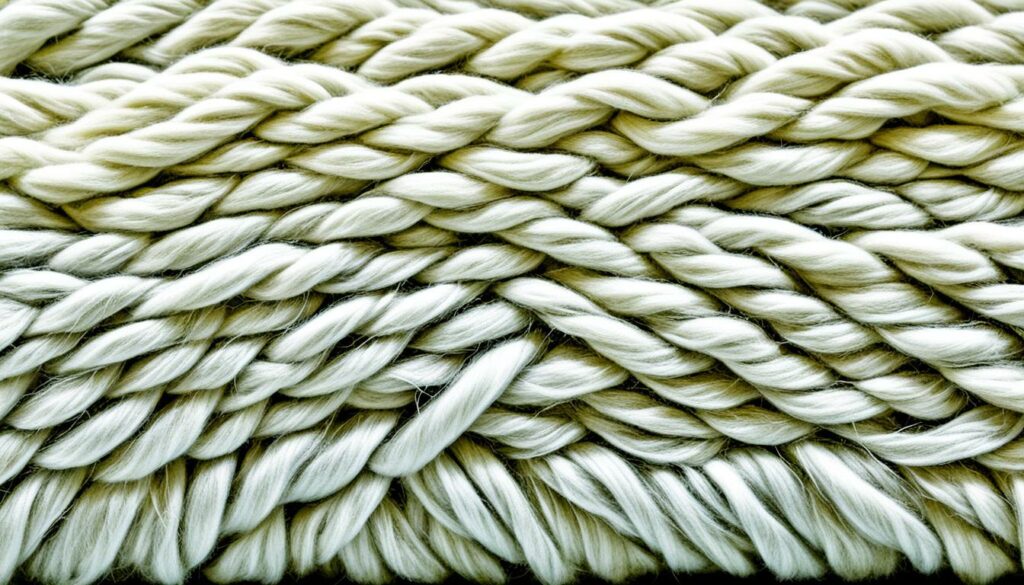
Recommended Roving Quantities for Different Project Sizes
| Project Size | Recommended Roving Quantity |
|---|---|
| Small accessories (hats, gloves) | 4 oz |
| Smaller shawls | 4 oz |
| Long scarves, hat/mitten sets | 8 oz or more |
By taking into account the specific requirements of your project, you can choose the appropriate amount of roving and ensure a successful spinning experience. Remember, it’s always better to have more fiber than to run out in the middle of your project.
Recommended Roving Types for Beginners
When starting your spinning journey, it’s important to choose roving types that are easy to spin and beginner-friendly. We recommend two popular fibers that are known for their simplicity and versatility: Corriedale and Romney.
Corriedale
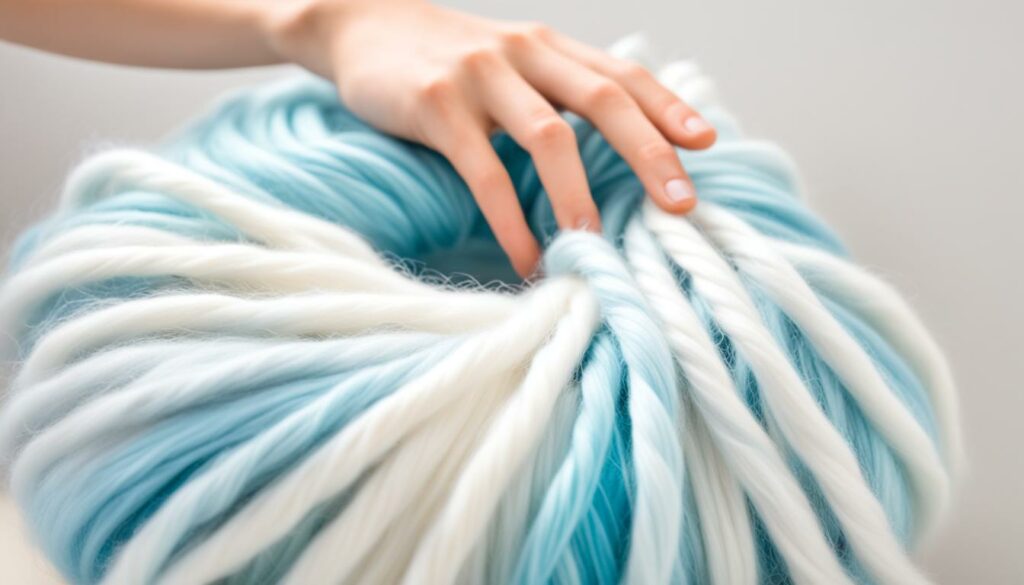
Corriedale roving is an excellent choice for beginners due to its ease of drafting and spinning. This breed is a cross between Merino and Lincoln, resulting in a fiber that combines the softness of Merino with the durability of Lincoln wool. Corriedale fibers have a medium staple length, making them easy to handle and spin. They are also available in a wide range of beautiful colors, offering endless possibilities for your handspun creations.
Romney
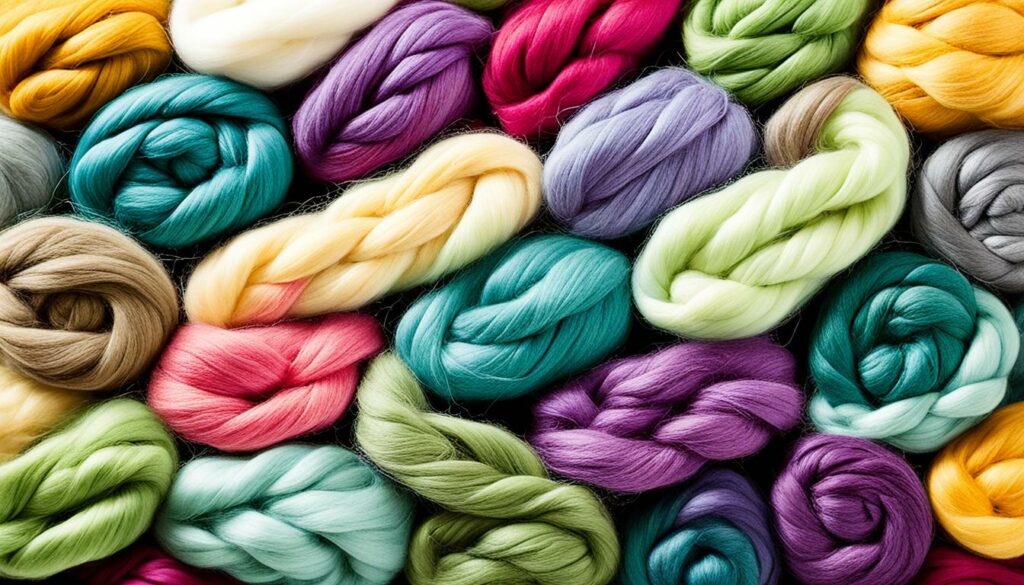
Romney roving is another great option for novice spinners. This longwool breed hails from England and is known for its lustrous and strong fibers. Romney wool is relatively easy to draft and spin, making it an ideal choice for beginners. Its longer staple length provides added control while spinning, allowing you to focus on mastering the technique. Whether you’re spinning a fine yarn or a chunky one, Romney roving will lend itself beautifully to your spinning projects.
As you embark on your spinning journey, remember that there are many roving blends and breeds available, each with its own unique characteristics. Don’t be afraid to explore different types of roving based on your preferences and spinning goals. With practice and experimentation, you’ll discover the fibers that resonate with you and bring joy to your spinning experience.
Optimal Fiber Processing for Spinning
When it comes to spinning, some of us prefer to work with unprocessed roving, which preserves the natural characteristics of the fiber. This includes the occasional presence of vegetable matter (VM), giving the wool an authentic feel. We believe that unprocessed roving offers a unique spinning experience that can’t be replicated by heavily processed rovings.
Unprocessed roving, also known as “real wool,” provides a connection to the organic nature of the fiber. It allows spinners to experience the raw beauty of the material as it comes from the animal. The occasional presence of VM adds authenticity to the spinning process, reminding us of the fiber’s journey from farm to yarn.
“Working with unprocessed roving allows me to fully appreciate the natural qualities of the wool. It’s like taking a step back in time and experiencing the traditional methods of spinning.” – Jane, experienced spinner
For those seeking less processed, natural wool qualities, we recommend exploring Canadian Fibre. This brand offers a variety of rovings that retain their natural characteristics, providing spinners with a range of options to choose from. One notable example is the California Red, known for producing beautiful natural-colored yarn.
Unprocessed roving allows spinners to tap into the essence of the fiber and create unique, one-of-a-kind yarns. By working with rovings that preserve the natural wool characteristics, we can truly appreciate the craftsmanship and beauty of the spinning process.
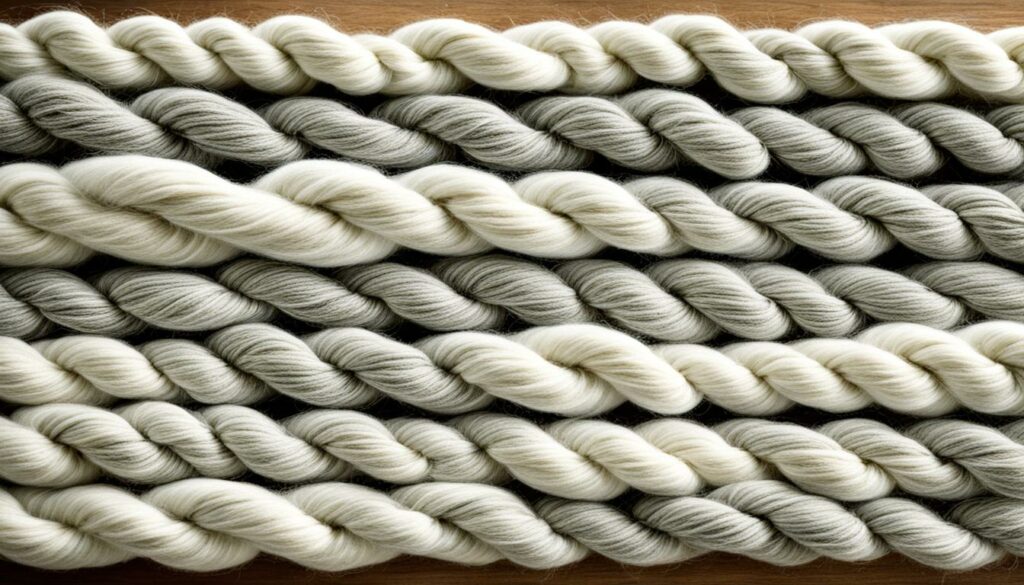
Benefits of Using Unprocessed Roving:
- Preserves the natural characteristics of the fiber
- Offers an authentic spinning experience
- Provides a connection to the organic nature of the wool
- Adds unique texture and visual interest to the yarn
- Allows for the creation of beautifully natural-colored yarn
Exploring the world of unprocessed roving can be a rewarding experience for spinners. By embracing the natural qualities of the fiber, we can create yarns that are uniquely our own.
| Roving Type | Brand | Characteristics |
|---|---|---|
| California Red | Canadian Fibre | Produces beautiful natural-colored yarn with a rustic feel |
| Corriedale | Canadian Fibre | Easy to spin and versatile, suitable for a range of projects |
| Romney | Canadian Fibre | Known for its softness and durability, perfect for garments |
Expert Tips for Choosing Roving
When it comes to choosing roving for your spinning projects, seeking expert advice can make a world of difference. Experienced spinners, like Flannelberry, can provide valuable insights and personalized recommendations to help you find the perfect roving for your needs.
When seeking expert guidance, it’s essential to consider your spinning experience level, preferences, and the requirements of your project. By sharing this information with a knowledgeable spinner, you can receive tailored recommendations that align with your specific goals.
Experienced spinners understand the wide range of roving options available and can provide invaluable guidance in navigating through them. They can offer insights on fiber types, blends, preparation techniques, and the characteristics of different breeds. This expert knowledge can help you make well-informed decisions, ensuring the success of your spinning projects.
| Expert Tips for Choosing Roving |
|---|
| Consult with experienced spinners |
| Consider your spinning experience level, preferences, and project requirements |
| Seek personalized recommendations from experts like Flannelberry |
| Explore the wide range of roving options with expert guidance |
Take advantage of expert advice to optimize your roving selection and enhance your spinning experience. Their personalized recommendations can guide you towards the perfect roving, enabling you to create beautiful, handspun yarn that meets your unique vision.
The Excitement of Spinzilla and Personal Spinning Journey
Participating in the Spinzilla event is an exhilarating experience that allows spinners like us to showcase our spinning skills and engage in friendly competition. This annual event brings together spinners from around the world, creating a vibrant and supportive community.
One of the joys of our personal spinning journey is the opportunity to embark on weaving projects using the yarn we create. The process of choosing roving colors and fibers is a delightful chance to express our creativity and personality. Whether we opt for vibrant and bold hues or prefer the soothing tones of natural fibers, the possibilities are endless.
When it comes to spinning techniques, exploring slow spinning methods adds a new dimension to our craft. Techniques such as the long-draw method allow us to create yarn with unique characteristics. By taking our time and letting the fiber flow, we can achieve a soft and airy yarn that’s perfect for lightweight and delicate projects.
As we delve deeper into our spinning journey, we begin to understand the importance of finding the right yarn colors and fibers that align with our personal preferences and project requirements. Whether we aim to create a warm and cozy sweater or a delicate lace shawl, selecting the perfect combination of colors and fibers is key to bringing our vision to life.
Discovering new techniques, participating in Spinzilla, and embracing our personal spinning journey provides us with endless opportunities for growth and creativity. Each skein of handspun yarn carries a piece of our passion and dedication, making every project a true labor of love.
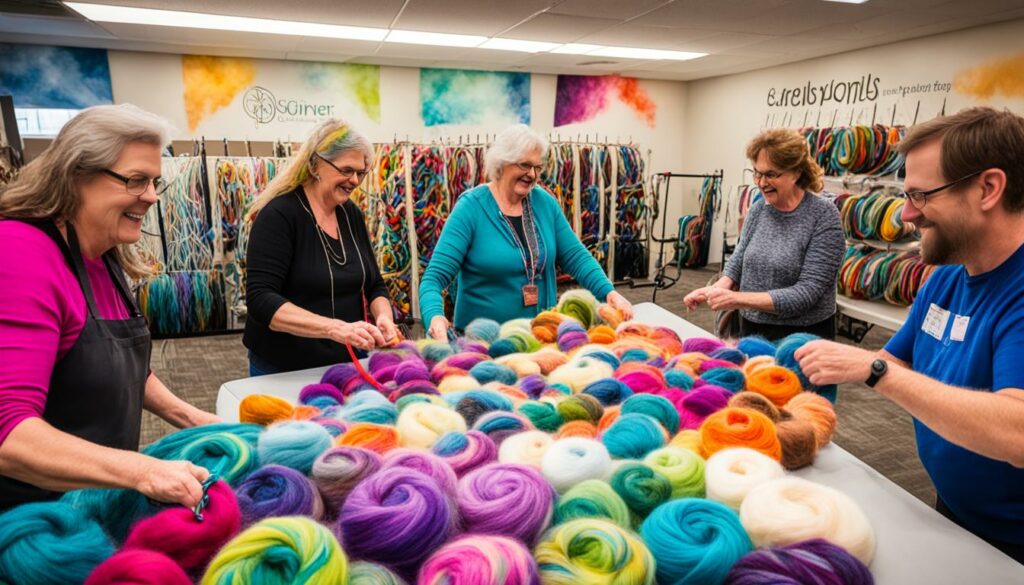
Spinzilla Event Highlights
| Year | Location | Dates |
|---|---|---|
| 2019 | Online | October 1-7 |
| 2020 | Virtual Event | September 28-October 4 |
| 2021 | Global | October 4-10 |
Conclusion
Estimating yarn quantity from roving involves considering factors such as fiber type, spinning technique, and project requirements. By sampling, swatching, and calculating yards per pound, we can determine accurate estimates of yarn needed for our handspun projects. These essential steps ensure that we have the desired yarn specifications and gauge before embarking on our spinning journey.
Furthermore, the selection of roving type, quantity, and seeking expert advice can greatly enhance our spinning experience and increase the success of our projects. Whether we are beginners or experienced spinners, consulting with experts such as Flannelberry provides valuable insights and personalized recommendations for choosing the right roving. Their guidance helps us navigate the wide array of options available and make informed decisions that align with our spinning goals.
In conclusion, let’s embrace the joy of spinning and experiment with different roving options to create beautiful handspun yarn. The process of estimating yarn quantity, sampling, and swatching is an exciting part of our spinning journey. With the right roving and knowledge, we can unleash our creativity and bring our spinning projects to life.
